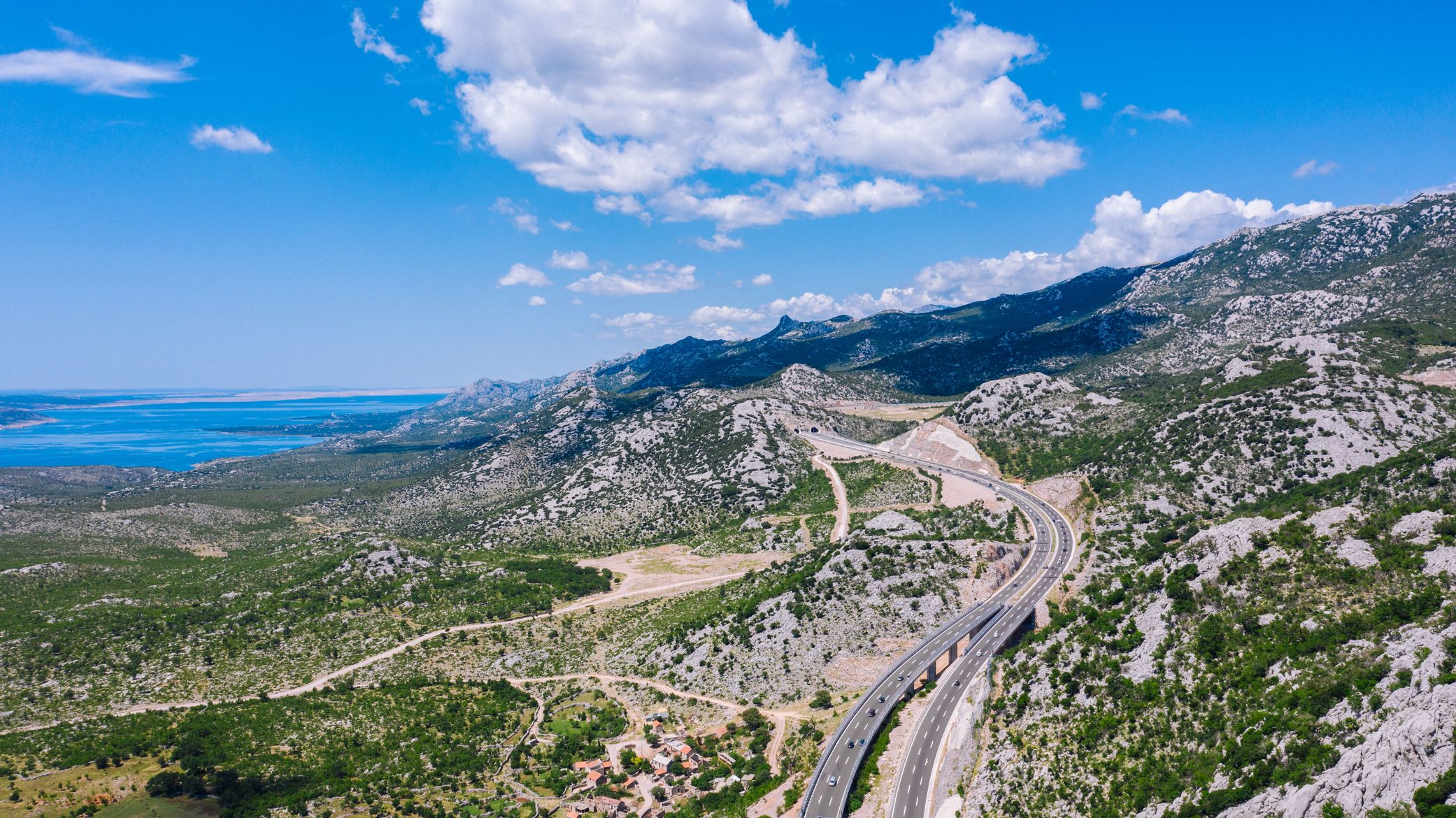Croatia Traffic Guide
Driving to Croatia by car?
Croatia has a variety of diverse places to offer, from the Dinaric Alps to the Adriatic coast. Since the road network is well-developed, the car is the transport of choice for long-distance travel.
What you need to consider when driving in Croatia, which traffic rules apply, and how best to get around, you will learn in this guide.
Overview of Traffic Rules in Croatia
- Driving is allowed in Croatia from the age of 18. Foreign driver's licenses are generally recognized if they are written in Latin script. Those with a national driver's license in a different script system need an international driver's license as well.
- In Croatia, you drive on the right side of the road and overtake on the left.
- Within built-up areas, there is a speed limit of 50 km/h. Outside built-up areas, up to 90 km/h is allowed. The speed limit on expressways is 110 km/h, while on Croatian motorways, a maximum of 130 km/h is permitted.
- For drivers under 25 years of age, the speed limits outside built-up areas are 10 km/h lower. They are allowed to drive up to 80 km/h outside built-up areas, up to 100 km/h on expressways, and a maximum of 130 km/h on motorways.
- In Croatia, all passengers in the vehicle must wear seat belts.
- The driver may only use a mobile phone with a hands-free system while driving.
- From the end of October to the end of March, cars in Croatia must also use lights during the day. Motorcycles are required to use lights all day, every day.
- Radar detectors are prohibited in Croatia.
- Mandatory equipment in the car includes reflective vests that must be worn when exiting the vehicle in case of a breakdown or accident, a first-aid kit, and a warning triangle. An additional set of spare lamps is recommended.
- Drivers must adhere to a blood alcohol limit of 0.5‰. For individuals under 25, the alcohol limit is 0.0‰.
- When overtaking, the turn signal must remain on until the overtaking maneuver is completed.
- School and children's buses that are stopping to allow passengers to board or disembark may not be overtaken.
- Rail vehicles always have priority in Croatia.
Driving in Croatia
The roads in Croatia
The Croatian road network is well-developed and predominantly in excellent condition. The larger cities and the centers in the north and south of the country are connected by multi-lane motorways.
Even outside the main connections, you will mostly find asphalted roads with few surface damages. In the countryside and on the islands off the coast, you may encounter narrow paths without markings or lighting. Due to the calm traffic in these areas, these are usually easy to navigate. However, particularly on less frequented and rural routes, pay special attention to animals, cyclists, and agricultural vehicles.

You should under no circumstances leave paved roads, especially in border areas, as there is still a risk of landmines. Minefields may be marked with triangular signs reading "Ne Prilazite" or with yellow plastic strips. However, many minefields are still undiscovered.
Croatian drivers, especially in the south of the country, are considered chaotic and impatient. Particularly in cities, risky overtaking maneuvers can occur.
In large cities like the capital Zagreb or the coastal city of Split, you should expect increased traffic. Since Croatia's major cities are well-equipped with public transportation, it may be advisable to forego using a car there.
Petrol stations and charging stations
Petrol and Diesel: Prices at Croatian petrol stations are roughly at the European average. Petrol stations are available throughout the country. They are usually open during the day and, during the summer months, often until late in the evening. On motorways and major roads as well as in large cities, you can refuel around the clock. You are not allowed to carry spare fuel canisters in Croatia.

Those in need of diesel should opt for the fuel labeled "Eurodiesel." The fuel designated as "Diesel" is only suitable for trucks.
Electric cars: The charging infrastructure for electric vehicles is still under development. In the northwest and in touristically popular regions along the coast, an adequate number of charging stations are already available. Towards the east and in the interior of the country, it is currently still difficult to charge an electric car away from the main roads.
Hydrogen cars: Currently, there are no hydrogen filling stations available in Croatia. However, the expansion of the refueling infrastructure for hydrogen cars is already in the planning stages.
Rental car or own car?
Croatia is easily accessible in Southern Europe along the Adriatic Sea coast and is ideally suited as a travel destination with your own car. Croatia's membership in the European Union makes entering with a vehicle from another EU country very straightforward. The Euro plate serves as proof of liability insurance and as a country code. However, carrying the International Insurance Card is still recommended to be covered in case of damage.
When exiting, note that vehicles with noticeable body damage can only leave the country with a police damage confirmation. If you are involved in an accident with property damage in Croatia, you should therefore immediately notify the police and obtain a damage confirmation.
Exploring Croatia with a rental car is also convenient. To book a rental vehicle, you must be at least 18 years old. Additional fees may apply for drivers under 22 and over 70.
Fines
In addition to high fines, in Croatia, some traffic offenses (for example, drunk driving) can also result in driving bans and prison sentences. Moreover, Croatia has a point system for traffic violations.

Excerpt from the Croatian fine catalog:
- Speeding (20 km/h over the limit): from 70 euros (approx. £60)
- Speeding (50 km/h or more over the limit): up to 2,000 euros (approx. £1,700)
- Seat belt violation: 65 euros (approx. £55)
- Using a mobile phone while driving: 65 euros (approx. £55)
- Illegal parking: from 40 euros (approx. £35)
- Drunk driving: from 395 euros (approx. £340)
- Running a red light: from 265 euros (approx. £230)
Conclusion: Safe Travel Through Croatia
Croatia can be comfortably explored by car thanks to the optimally developed road network. Petrol and diesel are readily available everywhere. Currently, electric cars may need a bit longer to find charging options. However, with the right preparation, you can manage well with an electric car in Croatia. Only travel with a hydrogen car is not yet possible.
► Here, you can find more information about the toll regulations in Croatia to be optimally prepared for your trip.






